A sensor for just over 150 euros that can still measure a good number of parameters in cultivation? That's remarkable. It is a conscious choice by Quantified Sensor Technology. The sensor developer got into horticulture via a meeting with Koppert Cress.
Quantified is a spinoff of the Delft University of Technology. From what is now an office with a lab in Leiden,the Netherlands, a club of technicians works on a complete sensor package. Asked what can already be measured, the list goes on—temperature, RH, light, airflow, drain, weight, EC, and moisture. Quantified is also looking at developing optical sensors.
Dog bone
With its sensors, the sensor company is targeting agriculture and horticulture, including vertical and indoor farms, as well as smart cities, including sensors that measure soil moisture in parks. The sensors help municipalities water public green spaces efficiently.
Quantified's flagship product is the FireFly, a sensor that looks like a dog bone. For all other sensors, this 'transmitter module' is the basis. This makes Quantified's concept modular and easy to scale up.
Inside the FireFly is a battery. According to Warner Venstra, one of the founders, the sensor company stands out with a long battery life of about one year at a measurement interval of five minutes. In addition, the wide range of sensors also stands out for the still relatively young company, which has been in business for about three years. They operated under the radar until the end of 2022. Until then, products were extensively tested with customers for accuracy, robustness, and battery life.
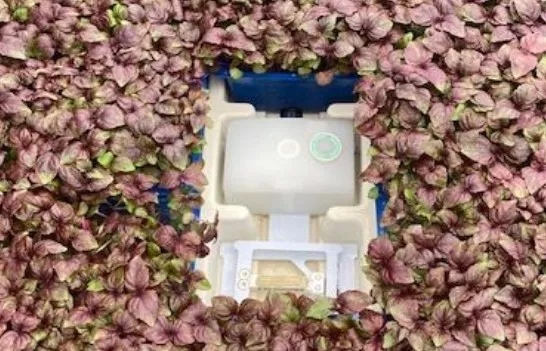
FireFly application at Koppert Cress
Simply by mail
Another striking aspect of Quantified's concept is that the sensors are simply sent by mail. "We design our products for plug&play use by growers around the world," says Warner. Quantified has entered the Dutch market. Koppert Cress, through whom the company entered horticulture, became its first customer. "But really, we expect to make a lot of growth with our sensors in tunnel greenhouses. The vast majority of greenhouses in the world are relatively cheap plastic tunnels. You can make low-tech greenhouses like this mid-tech with our sensors."
For Koppert Cress, a custom-made sensor was made that measures a lot of parameters at one tray of cresses. The sensor measures the weight of the tray and, therefore, irrigation, enabling optimization of watering. The sensor also measures temperature, RH, barometric pressure, PAR light, and has a GPS sensor. "We distinguish ourselves with a very complete and affordable sensor," he says.
Deliberately 'low priced'
Striking is that sensors are available for just over 150 euro each. Warner explains that Quantified envisions growers using many more sensors in addition to the measuring box they now often have hanging in the greenhouse.
"In the last 20 years, the average greenhouse area has tripled. Local differences in climate, which are linked to the position of the sun or wind direction, for example, are increasing as a result. A single measurement box gives no information about uniformity. We make the variations visible by measuring in several places and among the crops. From a number of measuring points, you can graphically display the climate data very nicely, like a kind of color plate, showing uniformity in place and time at a glance. Volume is also the magic word for us. By producing large quantities, the price can be reduced."
Currently, Quantified is still mainly supplying sensors to early adopters, says Warner. "But we expect the measurement method to become mainstream - especially if the grower will soon be able to switch on or off wirelessly in the greenhouse via our FireFly devices - technology we will soon start offering."
He mentions projects at Bejo Zaden and Agro Care in North Africa, among others. "Thanks to large numbers, we can work with low margins. We also want to offer the product against a low price because this allows us to believe that the grower can actually work with more sensors." Ideally, a grower will soon install 10 to 40 sensors per hectare.
Data platform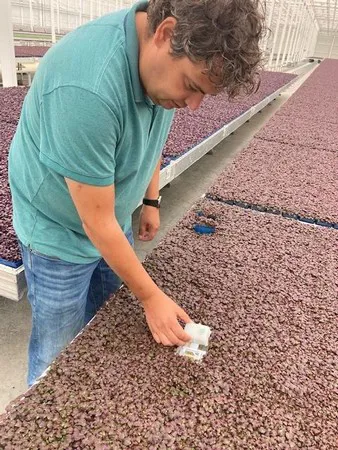 Now, a grower often works with a measurement box that is controlled. "These sensors are often wired, but in some cases, laying a cable is not practical. Wireless sensors are easier to install or move. By measuring the crop across the greenhouse, you can reveal local differences in the microclimate. The grower can then start steering based on that data. By grabbing the sensor with the measurement data where the most climate gains can be made and steering them accordingly, you can start growing more effectively. Now, due to the lack of sensors and use of only a measurement box, there is still a considerable safety margin."
Now, a grower often works with a measurement box that is controlled. "These sensors are often wired, but in some cases, laying a cable is not practical. Wireless sensors are easier to install or move. By measuring the crop across the greenhouse, you can reveal local differences in the microclimate. The grower can then start steering based on that data. By grabbing the sensor with the measurement data where the most climate gains can be made and steering them accordingly, you can start growing more effectively. Now, due to the lack of sensors and use of only a measurement box, there is still a considerable safety margin."
Photo right: Bart van Meurs of Koppert Cress/Divison Q takes delivery of the first custom-made 'CressWatch' sensors from Quantified Sensor Technology eight months ago. A network of dozens of wireless CressWatch nodes will provide the data that will be used to optimize local climate and watering in cress crops.
Quantified provides a platform to collect data and make it insightful for growers, but linking with other platforms is preferred. "We are currently in discussions with a number of platforms on this," he says. Integration of sensor data into LetsGrow.com is already possible. Koppert Cress is doing the same on another platform the cress grower already uses: Blockbax.
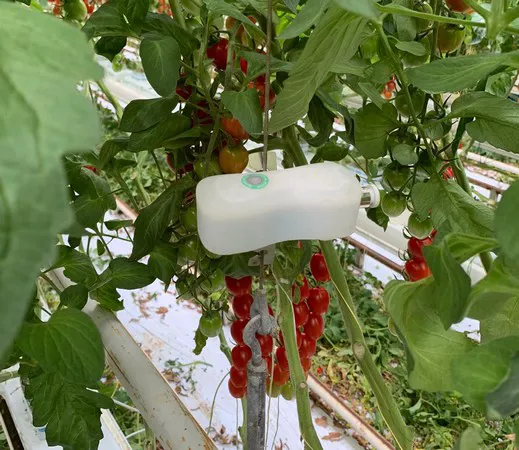
FireFly at Agro Care
Defect? New sensor
Before Quantified really went to market, extensive testing was carried out on whether the sensors would continue to work for long periods in the greenhouse environment, which is aggressive for electronics. Important because the company deliberately chooses not to visit growers much. "If there is a problem, we are usually able to solve it over the phone or via the internet," it says. We usually don't see errors in the sensor hardware, but sometimes a sensor disappears in a mower, for example. In such a case, we send a new one."
According to Warner, the market launch during Covid helped this way of working. "It became more normal to work remotely. Moreover, in part because of plant viruses, growers no longer want so many people to come over. We try to maintain the working method from Covid times."
Meanwhile, the technicians are working on new sensors. "Of course, we continue to work on the continuous improvement of the sensors that are widely applicable, but we also develop sensors 'customized' for research projects or other special requests of a customer. These can be connected to our wireless platform as required. We are particularly interested in sensors that require new technology to be invented: we are constantly looking for ways to push technological boundaries."
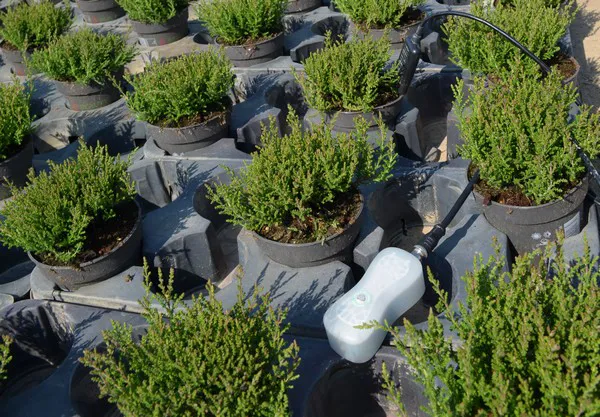
Application in growing potted plants
For more information:
Quantified Sensor Technology 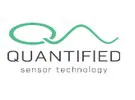
Langegracht 70 - PLNT
2312 NV Leiden
info@quantified.eu
www.quantified.eu
